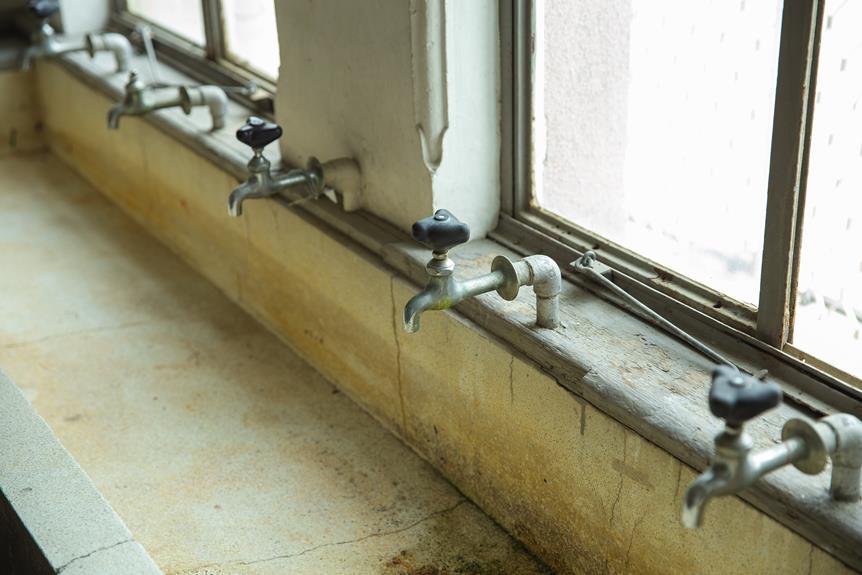Do grow lights really kill mold? Find out in this article where we dive into the scientific relationship between grow lights and mold.
Discover how grow lights impact mold growth and the factors that influence their effectiveness in killing mold.
Plus, get valuable tips on using grow lights to combat mold in indoor gardens.
If you're looking for technical, precise information on preventing mold with grow lights, you've come to the right place.
Key Takeaways
- Grow lights can provide the necessary warmth and darkness for mold growth, creating an ideal environment for its development.
- Certain wavelengths of light, such as UV light, have germicidal properties and can inhibit mold growth by disrupting the DNA of mold spores.
- Blue and green light within the visible light spectrum can promote mold growth, so grow lights emitting these wavelengths should be avoided.
- The type of grow light used, its intensity, duration of exposure, and temperature all play a role in inhibiting or promoting mold growth.
Understanding the Relationship Between Grow Lights and Mold
- You can understand the relationship between grow lights and mold by examining their effects on each other. Grow lights emit light in specific wavelengths that are essential for plant growth and development. These wavelengths, particularly in the blue and red spectrum, promote photosynthesis and stimulate plant growth. However, these same wavelengths can also stimulate mold growth under certain conditions.
- Mold requires specific environmental conditions to thrive, including moisture, warmth, and darkness. Grow lights can provide the necessary warmth and darkness, especially when used in enclosed spaces like greenhouses or indoor gardens. The heat radiated by grow lights can create a warm and humid environment, which is ideal for mold growth.
- Additionally, the continuous operation of grow lights can generate heat, leading to increased moisture levels in the surrounding air. Moisture accumulation can occur on plant surfaces, as well as on walls, ceilings, and other surfaces within the growing area. These moist environments provide an excellent breeding ground for mold spores to germinate and proliferate.
- To prevent mold growth, it's crucial to maintain proper ventilation and air circulation in grow spaces. Adequate airflow helps reduce humidity levels and prevent moisture buildup, thereby minimizing the conditions favorable for mold development. Regular cleaning and maintenance of grow lights and surrounding surfaces are also essential to prevent mold spores from settling and growing.
- In conclusion, while grow lights are necessary for plant growth, they can inadvertently create conditions that promote mold growth. By understanding the relationship between grow lights and mold, proper precautions can be taken to minimize the risk of mold infestation and maintain a healthy growing environment.
How Grow Lights Affect Mold Growth
To understand how grow lights affect mold growth, you need to consider their impact on the surrounding environment. Grow lights emit different wavelengths of light, and these wavelengths can influence the growth and development of mold. Mold requires specific conditions to thrive, including moisture, warmth, and darkness.
When it comes to mold growth, certain wavelengths of light can inhibit its development. Ultraviolet (UV) light, for example, has been shown to have germicidal properties and is commonly used to disinfect surfaces. UV light can disrupt the DNA of mold spores, preventing their reproduction and growth. However, it's important to note that UV light can also have harmful effects on humans and other living organisms, so caution must be exercised when using UV grow lights.
On the other hand, certain wavelengths of light, such as blue and green light, can promote mold growth. These wavelengths are within the visible light spectrum and can provide the energy needed for mold to thrive. Therefore, if you're concerned about mold growth, it's advisable to avoid using grow lights that emit blue or green light.
Factors Influencing the Efficiency of Grow Lights in Killing Mold
When using grow lights to kill mold, it's important to consider the factors that influence their efficiency.
Several key factors can impact the effectiveness of grow lights in eliminating mold growth.
First and foremost, the type of grow light used plays a crucial role. Different types of grow lights emit varying wavelengths of light, and certain wavelengths have been found to inhibit mold growth more effectively than others. For instance, ultraviolet (UV) light has been shown to have germicidal properties and can effectively kill mold spores. Therefore, using UV grow lights specifically designed for mold remediation can significantly enhance the efficiency of mold elimination.
Another important factor to consider is the intensity or brightness of the grow lights. Mold requires darkness to grow, so using high-intensity grow lights that provide ample brightness can help suppress mold growth.
Additionally, the duration of exposure to grow lights is critical. Mold growth can be inhibited by exposing the affected area to grow lights for extended periods. It's recommended to use grow lights for at least 12 hours a day to ensure sufficient exposure.
Temperature also plays a role in the efficiency of grow lights in killing mold. Mold thrives in warm and humid environments, so using grow lights that emit heat can further hinder mold growth. However, it's important to ensure that the temperature doesn't become excessive, as extremely high temperatures may damage the surrounding materials or pose a fire hazard.
Tips for Using Grow Lights to Combat Mold in Indoor Gardens
Use grow lights in your indoor garden to effectively combat mold. Here are some tips to ensure that you're using grow lights in the most efficient way to prevent mold growth.
First, choose the right type of grow light for your plants. LED grow lights are highly recommended as they emit low levels of heat and can be adjusted to provide the specific light spectrum needed for plant growth.
Position the grow lights at the appropriate distance from your plants to avoid excessive heat and ensure optimal light distribution. Keep in mind that different plants have different light requirements, so adjust the intensity and duration of the light accordingly.
It's also important to maintain proper ventilation in your indoor garden. Stagnant air can promote mold growth, so use fans or air circulation systems to keep the air moving.
Additionally, regularly clean your grow lights to remove any dust or debris that may accumulate on them. This will help prevent the growth of mold spores.
Other Methods to Supplement Grow Lights in Mold Prevention
One effective way to supplement grow lights in preventing mold is by implementing proper humidity control. Mold thrives in damp environments with high humidity levels, so maintaining optimal humidity levels can help inhibit its growth. To achieve this, you can use a dehumidifier to remove excess moisture from the air. Dehumidifiers work by drawing in humid air, cooling it to condense the moisture, and then releasing dry air back into the room. It's important to monitor and adjust the humidity levels regularly to ensure they remain within the recommended range for your plants. Aim for a relative humidity of around 50-60% to create an environment that's less favorable for mold growth.
Another method to supplement grow lights in mold prevention is by improving air circulation. Stagnant air can create pockets of moisture, providing an ideal breeding ground for mold. By using fans or ventilation systems, you can promote airflow and prevent moisture buildup. This helps to keep the air moving and reduce the chances of mold spores settling on your plants. Additionally, good air circulation can also help control temperature fluctuations, which can further contribute to mold growth.
Lastly, maintaining proper cleanliness and hygiene in your indoor garden is crucial to mold prevention. Regularly clean and sanitize your grow room, including all surfaces, tools, and equipment. Remove any dead or decaying plant matter promptly, as they can become a potential food source for mold. By practicing good hygiene and keeping your growing environment clean, you can minimize the risk of mold infestation and ensure healthy plant growth.
Conclusion
In conclusion, grow lights can effectively combat mold growth in indoor gardens. By providing the necessary light spectrum and intensity, grow lights inhibit the growth and spread of mold spores.
Factors such as light duration, distance, and temperature also play a crucial role in the efficiency of grow lights in killing mold.
Additionally, incorporating other mold prevention methods alongside grow lights can further enhance their effectiveness in maintaining a healthy indoor garden environment.






0 Comments